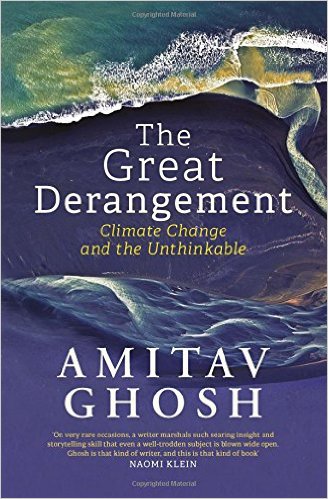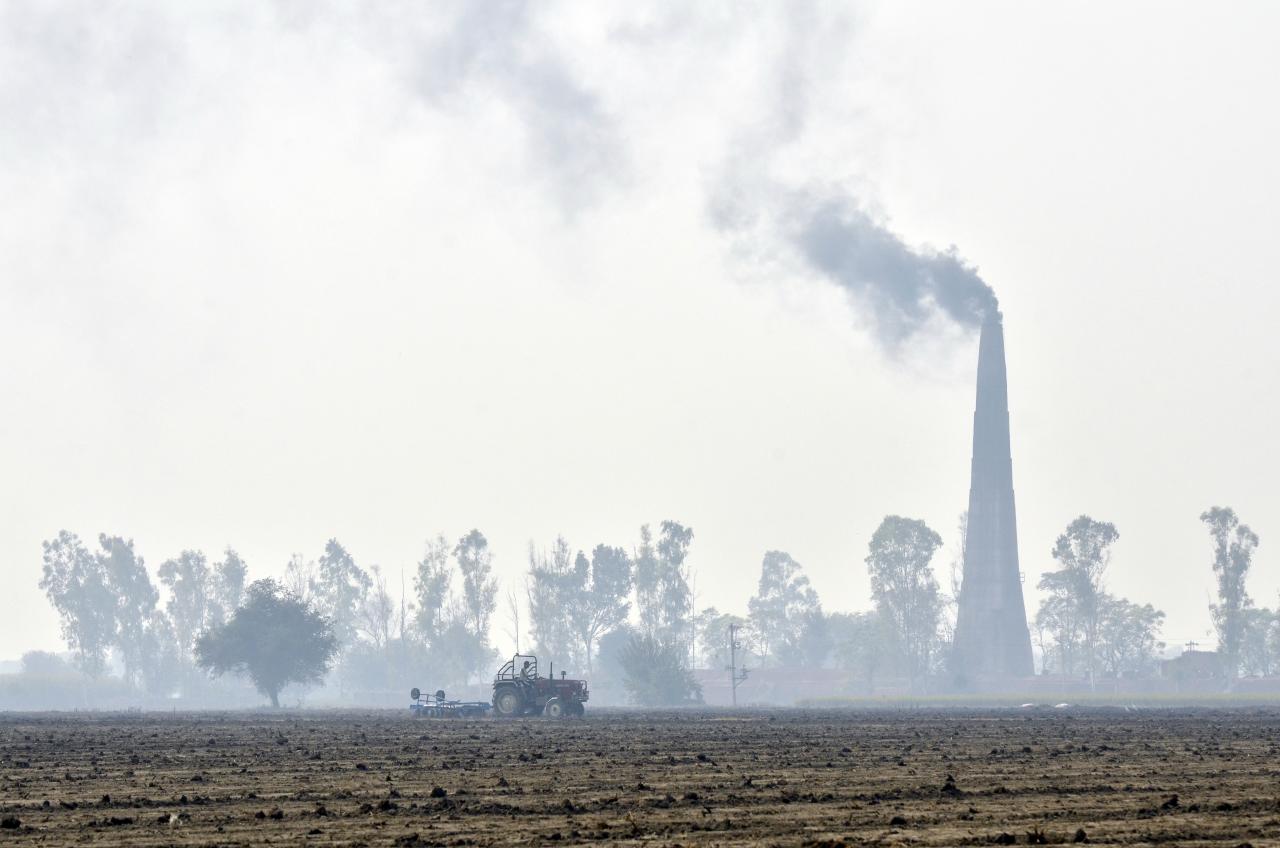by Olga V. Solovieva
This essay has been peer-reviewed by the boundary 2 editorial collective.
One day when I was growing up in the Soviet Russia of the 1970s-80s, my grandmother pointed to the watchman of our dacha neighborhood in Abramtsevo. He used to work for the NKVD (the infamous secret police, predecessor of the KGB, now FSB) she said, so if ever one needed a sick pet to be shot, he could be asked to do the distressing job with unflinching professionalism. I don’t know what exactly triggered this conversation but it must have made an impression because I still remember well the image of a lean, dry old man in a uniformly grey linen outfit and a flat grey cap. He always walked around the neighborhood with a determined fast pace, leaning slightly forward, with his little grey eyes always focused on something in front of him and his narrow face frozen into a strange glassy smile. His hand clutched a rifle which he always carried in one arm, just above his knee, parallel to the ground. You could see him often in the summer making his rounds. He cut a strange figure in our peaceful retreat, and that day my grandmother must have been answering a question of mine.
His name was Svistun, which translates into English as “whistler,” a typical criminal-argot nickname for an NKVD executioner. Our street, lined with dachas belonging to the members of the Association of Composers, segued into a street with bigger dachas and much bigger plots of land, which belonged to former employees of the NKVD. Most of them had long since retired and died by the time I was growing up. Svistun, who must have been in his 80s, was the last survivor. One summer he wasn’t seen anymore, and we heard that he had died, too. But the snapshot of his dark shadow sliding past the garden fences on a sunny summer day has stayed with me as a vestige of my own late witness to an excruciating period of Russian history which, as it turns out, tragically, has not become history yet, but continues haunting our present.
Svetlana Alexievich’s last book Время Секонд Хэнд (2013), published in English translation by Random House in 2016 as Secondhand Time: The Last of the Soviets, conjured up this image of Svistun, along with so many similar memories which are as much personal as they are collective for every person of my generation who grew up in the Soviet Union and still remembers such bleak specters from the past whose quiet pursuits of everyday life were eerily suggestive of the Stalinist rule of terror. The surreal enmeshment of past and present, of victims and persecutors in the Soviet society would have been unbearable were it not covered up by the cloying optimism of Soviet ideology. Through Alexievich’s book we witness the human cost of this ideology’s formation as well as of its demise.
Secondhand Time is the last in the author’s series of five investigations of the psychological make-up of the Soviet people, which she shows was conditioned by perpetual war. She has written about the Second World War as remembered by female veterans and by orphaned children, about the Afghanistan war, and about the traumatic Chernobyl disaster, combated in a war-like manner. The finale deals with the dissolution of the Soviet Union, inducing multiple civil wars in the former Soviet republics, military stand-offs in the constitutional crises of 1991 and 1993, and the war-like criminality and terrorist attacks of today.
Set next to the rest of Alexievich’s output, this book stands out for its much wider historical scope: We hear the voices of people who survived the Stalinist labor camps of the 1930s, lived through the Second World War, and experienced postwar Soviet and then post-Soviet history, up to the present. Alexievich arranges this vast material so as to yield a unique insight into the failure of the post-Soviet democratization. “It is in the human being that everything happens,” she says in the prologue to her book “Remarks of an Accomplice,” and further explains that she is interested in tracing an emotional history of the Soviet people because “[h]istory is only interested in facts, and emotions stay out of bounds. It is unusual to take them into history. I look at the world through the eyes of a humanist, not a historian. I take wonder in human beings…” (2013: 11).
Her wonder at human beings allows the author to reveal how deeply the psychological and social operation of ideology is rooted in human nature, which she sees as an important factor in preventing the former Soviet citizens’ recovery from the totalitarian mind-set. In her Nobel Prize acceptance speech “On the Battle Lost,” Alexievich lamented this failure:
I will take the liberty of saying that we missed the chance we had in the 1990s. The question was posed: what kind of country should we have? A strong country, or a worthy one where people can live decently? We chose the former – a strong country. Once again we are living in an era of power. Russians are fighting Ukrainians. Their brothers. My father is Belarusian, my mother, Ukrainian. That’s the way it is for many people. Russian planes are bombing Syria… A time full of hope has been replaced by a time of fear. The era has turned around and headed back in time. The time we live in now is second-hand… (2015: 21, https://www.nobelprize.org/nobel_prizes/literature/laureates/2015/alexievich-lecture_en.html).
The “battle lost” of the Nobel Prize lecture title is a double metaphor. The phrase is drawn from Varlam Shalamov, a writer and gulag survivor, whom Alexievich quotes as follows: “I was a participant in the colossal battle, a battle that was lost, for the genuine renewal of humanity” (2015: 7). In her lecture, however, Alexievich uses Varlamov’s expression in relation to another defeat, that of the post-Soviet recovery and democratization. The achievement of Secondhand Time consists in conveying how tightly these two defeats are interconnected.
The book offers an ironic spin on Varlamov’s dismay about the dictatorial hijacking of the 1917 revolution which led to the failure of the “genuine renewal of humanity.” It shows that the Stalinist genocide of the Soviet population, quite to the contrary, did lead to the emergence of a genuinely new, ideologically mutated human species, whom Alexievich, following common parlance, calls homo sovieticus and who, due to its very psychological make-up, was doomed to lose the battle for self-determination in the ideologically neutral, formalist proceduralism of democracy.
What went into the formation of the Soviet psychology is best illustrated by the story of the architect Anna M-aya who grew up in a labor camp where her mother was imprisoned during the Stalinist rule of terror. When the beginning of perestroika made possible the recoveries of the gulag past, Anna felt drawn back to the site of her childhood in the Karaganda steppes of Kazakhstan. Upon her arrival, she learned that the former prison barracks had been torn down to give space to a new settlement that was built quite literally on thousands of human bones. Every spring, when the ground thaws, bones resurface in the residents’ potato beds. The residents throw them into the ditches between the beds and crush them with their boots.
In Karaganda, Anna M-aya saw how former prisoners and guards continued living side by side in a prison city, as if in a gulag without walls: strangely bound by their shared history and – paradoxically – by their unrelenting dedication to the Soviet ideology. Like them, despite the harrowing experience of her camp childhood, Anna was emotionally invested in the Soviet version of history. In the camp, she tells the author, she was taught to love Stalin.
Shaping the new socialist man on the premises of Marxist ideology was a brutal affair. A similar project of social anthropology in its national-socialist version was revealingly called Zucht, or “grafting,” where a natural branch of a tree is cut off in order to be replaced with a different species. The NKVD was literally performing such a grafting. The detectives, the survivors remember, were pressing for denunciations of “clever ones,” people who not necessarily opposed the regime but could be expected to resist it by reason of their education or natural intelligence.
The “clever ones” (умные), even though the expression was used sarcastically, were precisely the type targeted for extermination. Their offspring, we learn from many stories, was like Anna M-aya especially prone to ideological indoctrination as an effect of their protective mimicry, of psychological coping mechanisms, or simply due to isolation and the impossibility of imagining an alternative. Children of those arrested were not allowed to stay behind with relatives but were sent along– babies to the camps, older children to schools. They often received new names in order to preclude future family reunification.
The imprisoned parents were replaced with the Homeland (as mother) and Stalin (as father). Under conditions of hunger, fear, and dehumanization, no terrifying details of which Alexievich spares the reader, an ideology oriented toward the glowing future offered a psychological survival device. Only the emotional history of a traumatized people could explain how the persecutions of Stalinist rule shored up rather than undermined the longevity of the Soviet regime.
Anna M-aya’s story, standing in for millions of similar stories, casts Soviet ideology as the Stockholm syndrome of an entrapped nation. When that ideology collapsed in the period of perestroika, what disappeared with it was precisely the last defense which had given victims as well as perpetrators a sense that an exalted purpose reigned over the unimaginable horrors they went through together.
In this book as in her others, Alexievich is interested in the representation of suffering. Here it is the suffering of perestroika’s losers. “Socialism ended but we stayed” is the recurrent theme of the book. “Our country doesn’t exist and will never exist again, but we are still here… old and appalling… with horrific memories and prosecuted eyes… We are here!” exclaims Anna M-aya. “Soviet zombies!” (2013: 268). Her return to the Karaganda steppes, become a vast anonymous graveyard with here and there a nameless cross sinking into the ground, vividly stages the existential blow of the removal of ideological defenses. While wandering in the steppes, Anna begins to faint, stumbling to the ground while embracing an anonymous grave marker (possibly her father’s?). At this moment, the vanished shining future leaves behind only the consciousness of futile victimhood.
The interviews collected in the book fall into two historical periods: The first part, “Consolation of the Apocalypse,” focuses on 1991-2001, that is, from the dissolution of the Soviet Union in December 1991 to the ascent of Vladimir Putin to power in 2000. The second part spans the years 2001-2012, the period of consolidation of new authoritarian rule under Putin. Symmetrically, both parts open with a medley of anonymous voices drawn “from the noise in the streets and the conversations in the kitchen”: individual stories emerge for a while from the mass, then recede into it again. This compositional device highlights the entanglement of the individual and the collective, suggesting that any other voice could have been singled out to yield its similar individual story.
But the interview material also undergoes a literary transfiguration through the author’s editing, titles, and composition. Alexievich entitles a group of fragmentary interviews assembled in the first part of the book “Ten Stories in a Red Setting,” thus signaling their ideological underpinnings, whereas “Ten Stories without a Setting” in the second part, subtitled “The Enchantment of the Void,” point to the ideological vacuum that followed.
The voiding of the past of homo sovieticus portrayed in this book has been brought about, ironically, by what were supposed to be the liberating reforms of perestroika. That the economic reforms were badly executed is a matter of common knowledge. (See, for example, Perry Anderson’s review, “Russia’s Managed Democracy,” London Review of Books 29:2, January 25, 2007, available at https://www.lrb.co.uk/v29/n02/perry-anderson/russias-managed-democracy). Alexievich shows that above all they were psychologically misguided. From 1985, under the auspices of glasnost’, the newspapers were abruptly filled with photographs of anonymous mass graves, vivid testimonies to the horrible crimes committed by the Soviet regime. The avalanche of historical revelations in the press was so jarringly at odds with official historiography that in 1988 my high school’s graduation exam in contemporary history was cancelled. No one knew any more how to evaluate and grade students’ knowledge of Soviet history.
The revelations of such crimes, however, led neither to reparations for the victims nor to official admission of wrongdoing by the government, either of which would have created a tangible and conclusive act of mourning and brought a sense of closure and moral judgment. An official condemnation of crimes would hardly be possible without condemning the ideological reversal of all the values that made them possible in the first place. But for decades the ideology in the name of which the crimes were committed had also sustained the survivors. The resulting cognitive dissonance and ethical limbo produced precisely that existential despair which Anna M-ay voiced to Alexievich.
The book’s epigraph, taken from The Days of Our Death, David Rousset’s memoir about the National Socialist death camps, captures the nature of the Soviet legacy: “Victim and executioner are equally ignoble; the lesson of the camps is brotherhood in abjection.” With the disappearance of ideological justification, “the last of the Soviets” were left with nothing but abjection. It is this ultimate trauma that Alexievich with astonishing endurance captures in her book. In the words of Anna’s son: “We all live in different countries, although this is all Russia. But we are monstrously connected with each other. Monstrously! Everyone feels betrayed…” (2013: 284).
Through her signature technique of montage, Alexievich conveys the intellectual and emotional confusion of the post-Soviet time while organizing her interview fragments into a coherent thesis about the fatal continuity and interdependence of Soviet and post-Soviet suffering. The resulting collage drives home the idea that the former Soviet citizens have not yet emerged from Stalinism’s division of the whole population into prisoners and prison guards. Quite to the contrary, the bottled-up vestiges of the gulag sensibility were shaken up and erupted with new vigor through the cracks of the dissolving Soviet empire into the post-Soviet everyday life.
The most disturbing aspect of post-gulag existence is that hidden mutual resentment among the citizens which has led to the sadistic, irrational criminality characteristic of post-Soviet public space, and continued dividing the society into executioners and victims. One vividly terrifying example is the 1988 pogrom of Armenians in the city of Sumgait in Azerbaijan, an episode of extreme violence and inventive torture embedded within an account of the Baku pogroms of 1990 told by the Armenian refugee Margarita K.
Alexievich provides little historical context, but it is worth pointing out that industrial Sumgait is one of many former camp cities, the core population of which grew from the former prisoners and their guards. Environmental pollution from chemical plants resulted in a child mortality so high as to merit a special cemetery. By 1988, according to statistics, every fifth citizen had at least one criminal conviction. Maybe it is no coincidence that the ethnic extermination of Armenians, who were perceived as more cultured and well-off, spearheaded and instigated by former Azerbaijani apparatchiks now striving for ethnic purity, found its willing executioners in this particular place.
Alexievich chooses and arranges the material so as to show that the terror tradition of extrajudicial killings of 1930s continued during the war in the mutual exterminations of Soviet citizens and in the practice of partisans and Belarusian peasants who, like the Germans, robbed, raped and killed Jews. It survived further in the Soviet army with its denigrating practice of hazing (dedovshchina). It metamorphosed into post-Soviet ethnic killings and almost annual terrorist attacks; it is present in police and skinheads who ruthlessly exploit, rob, kill and rape with impunity Tadzhik guest workers; it has survived in abuse of children and domestic violence against women. “When the big dragon died, many small dragons reappeared,” Alexievich says in an interview. All these recorded forms of brutality and victimhood in the post-Soviet period mirror Stalinism’s naked face after the ideological decorum of internationalism and Soviet solidarity has evaporated.
Alexievich’s endeavor is comparable to the ideology-critique of the Frankfurt School, especially its investigations of the roots and insidious afterlife of totalitarianism in the social and economic structures of postwar Germany. Her book participates in the work of coming to terms with the Soviet past as well as the present. The postwar Germans called this Vergangenheitsbewältigung, the overcoming of the past. In her ideology-critical impetus, she analyzes the causes of a great social catastrophe and the factors which continue to impede complete social and political recovery. Her unique achievement is to disclose the nature of totalitarianism, not from the analytical distance of a sociological perspective or philosophical reflection but from within the human being. The emotionally overwhelming power of her historical account stems from the immediacy of the voices represented.
The most excruciating detail of Anna M-aya’s story is not even the resurfacing of bones but (characteristically and self-reflexively in regard to Alexievich’s own poetics) the return of the voice. Anna M-aya goes to find a former prison guard in the children’s ward who derived special psychological pleasure from torturing toddlers by badmouthing their imprisoned mothers: “Your mother is bad,” she used to tell them, “but I’m good!” After so many years, Anna M-aya couldn’t recognize her, but the moment the old woman started speaking, she could not but recognize her voice: “Your mother is bad…” The voice was ingrained into her memories for life and stayed there although everything else changed.
This episode explains Alexievich’s preference for oral history with its insidious, almost unconscious, forms of memory hiding in spoken language itself, in the grain of the voice, in intonations. With her inevitable Dictaphone, she seeks to capture the most deeply hidden emotional dimensions of Soviet history and then builds them in an aural equivalent of cinematic montage into the powerfully expressive constructs of her books.
Bela Shayevich has managed the excruciating task of rendering Secondhand Time into English: “Translating Alexievich is difficult – not only do I face the reader’s task of braving murder, suicide, deprivation, and war along with Alexievich’s protagonists, I must tell these stories in the first person, taking on the voices of trauma. It is a lonely task, putting anguish into words while not being able to help the people speaking. It’s a relief at least to know their voices will be heard” (2015). To make heard the voices of suffering is Alexievich’s humanitarian goal. She seeks out the injured, humiliated, and downtrodden, wins their trust, and incites them to speak. “This is an expression of love, with the intention being to show that you are relevant for me” (Griffin, Block 2013: 167).
Her practical form of love recalls the social mission urged by liberation theology: “to accompany, to be close, and to mitigate the suffering of individuals.” When one of her interlocutors, the Armenian refugee Margarita K., shows her dismay that the emigration authorities don’t believe her love story with her Azerbaijani husband, Alexievich steps into her story answering: “I believe… […] I grew up in the same country as you. I believe!” Then she adds in parenthesis: “(We both cry.)”
In the climactic moment of the book, Alexievich literally descends into the underworld of Tadzhik guest-workers living in the dark basements of Moscow high-rises. Only in this episode do extensive authorial remarks occur, describing the burrowed tunnels through which Alexievich passes with her crew. Abjection cannot go deeper than this in contemporary Russian society. In the atmosphere of Russia’s blossoming racism and islamophobia, her journey into this invisible world of the most unprotected, vulnerable human beings to hear and record their stories is a descent into hell.
Alexievich’s unwavering affirmation of love for her downtrodden subjects signals her commitment to the task of redeeming the country. (The liberation theologian Gustavo Gutiérrez defined sin as “the refusal to love.”) This redemption starts with the task of understanding “what happened to us.” This understanding however comes not from the individual insights of the interviewed subjects, but from their authorial figuration. This aesthetically and ethically difficult task is Alexievich’s alone.
The individual voices collected in the book don’t reflect much on the causes of their suffering. Rather, they capture the confused sensibility of an epoch. In the conversation with Natalia Igrunova which concludes the Russian-language edition of the book, Alexievich observes that in her characters’ stories “all ideas, words are from a stranger’s shoulder, as if of yesterday, worn-out. Nobody knows how things should be, what would help us, and everyone falls back on what they used to know some time ago, on what has been lived by somebody, on old experience” (2013: 503).
In fact, many familiar topoi resurface in the discussion of the dissolution of the Soviet Union: the exchange of Soviet idealism for commercialism; the confusion of freedom with social Darwinism; the human cost of the dismantling of the social safety net; the question of who is to blame for the Stalinist repressions– the dictator himself, or his willing executioners; the failure of social and political reforms, and the metamorphosis of apparatchiks into oligarchs. But all these themes, in the end, are just subspecies of the major continuous complaint about the lack of mourning which was drowned out by the agitation of consumerism.
This complaint is second-hand, too. It was famously captured already in 1975 in the title of Margaret and Alexander Mitchell’s study, Inability to Mourn, dealing with similar phenomenon of displacement of mourning through consumerism in postwar Germany. Alexievich strives to respond by performing the actual task of memory and mourning. She captures the voices with their second-hand tunes and arranges them into a dirge which fills the post-Soviet ideological emptiness with the religious sensibility of a mourning ritual. But her ultimate task is to transform the outpouring of emotion into a collective process of thinking-through. This transformation is possible thanks to the literary dimension of Alexievich’s work — the choices of composition and imagery that give shape to the verbal material collected.
For example, the story of the mysterious suicide of fourteen-year-old Igor Poglazov, told by his mother, is entitled “About Alms of Remembrance and Desire for Meaning.” Neither family nor friends can figure out what really triggered the boy’s decision to die. His mother, a schoolteacher of literature, blames her son’s strange obsession with death on the glorification of heroic self-sacrifice in Soviet education. She refers specifically to Gorki’s romantic revolutionary parable “The Burning Heart of Danko,” where the Promethean figure Danko tears the heart from his chest to give warmth to his people. However, the boy’s morbid interest in funerals, ending with his own suicide in the toilet of his parents’ apartment, seems to have little in common with Danko’s revolutionary death for a cause.
Alexievich includes the story as a symbol of the hopelessness of the perestroika generation. To achieve this effect, she adds several brief interviews with the boy’s classmates: ten years after Igor’s suicide, his surviving friends have either turned into passive, depressed alcoholics or fallen victim to the mafia while trying to conduct a business. Igor’s aimless death comes to stand for what the author sees as the failure of a generation. The excruciating pain of a mother who lost her son is displayed to the reader as a literary device that helps signify something beyond her loss itself. Whatever the theme, Igor’s story is not an end in itself but serves another cause. At this moment, as at many similar ones, the reader can’t but recoil from such appropriation of suffering.
Inevitably, one comes to think of the historical counter-examples of documentary witness to human pain which are ethically unambiguous. The Holocaust video archive at the Jewish Museum in Berlin lets the survivors tell their stories in full, without interruption or editing for artistic effect. The census of victims of the Cultural Revolution in China assembled by Youqin Wang gives names, dates, and carefully recorded personal stories of suffering, persecution and death without transfiguring them artistically. (See Jake Smith, “Cultural Revelations,” The University of Chicago Magazine (Winter 17), available at https://mag.uchicago.edu/law-policy-society/cultural-revelations.) But Alexievich wants not just to record the voices but also to express her vision, to show, as she says, “what is behind it” through a meta-language of montage. The choice of this technique might be what throws a shadow of ethical ambiguity over her endeavor.
Montage is a brutal, forceful technique of highlighting and pointing, a spatial technique which interrupts the flow of narration. By freezing the pieces of reality into images it inevitably tends to fetishize. Since what is fetishized here is pain and emotional exposure, one is at times reminded of the sculptured plastinated corpses of Body Worlds. Skinned, with exposed muscles, they stand sometimes holding their own intestines at arm’s length – artworks made from human suffering (some of the raw corpses apparently are supplied by prisons in China).
Alexievich explains that “her theme is the metaphysical mystery of human life that ended up in the grinding-mill of history,” but it is an eerie image of the frozen corpses standing in the prison yard all winter long as glittering icy statues that stays with the reader as an image which self-reflexively captures the book’s poetics. Despite Alexievich’s claims that her book is not just a collection of horrors, sometimes it is difficult to ward off precisely that impression. The greatest challenge of her work is the clash of humanitarian intent with artistic implementation. The “mass-ornament” displayed here becomes an ideological liability for the author’s ideology-critical project.
And yet, despite all its excesses of horror, this book is more optimistic than Alexievich’s other works. We meet characters who in various ways represent what can be called “freedom”—such as Gavhar Dzhuraeva, the director of the Migration and Law Center at the Moscow Foundation “Tadzhikistan” who rescues the kidnapped, illegally arrested, and endangered Tadzhiks out of the hands of police and skinheads. We read about a woman who leaves her happy family to marry a convict whom she thinks she saw in a dream when she was sixteen. Put at the end of the book, this story (previously the subject of a film by the documentary film-maker Irina Vassilyeva) is remarkable in its symbolism of the pursuit of redemptive love for a murderer. One can discern there a call for facing up to the past and going on a journey of understanding.
And finally, at the very end of the book, we hear from an Everywoman who doesn’t care about the ideological wars of the past but mostly about the basic needs of survival. Ideological emptiness, we understand, can also feel like liberation: “Have you seen my lilacs? I go out at night to look at them – they glow. I’ll just stand there admiring them. Here, let me cut you a bouquet…” These are the last words of the book.
Published in Russian in 2013 when Vladimir Putin’s rule seemed to be faltering, the book seemed to have a conclusive quality. Alexievich announced in an interview that her next book would be about love. Now, she wants to start building. “But we start coming to and realize ourselves in the world. Nobody wants to live forever in the ruins, one wants to build something out of rubble.” Unexpectedly, after its publication, Secondhand Time acquired a prophetic status, in its raising the question of what it meant to be “secondhand.” Alexievich’s theme of the post-Soviet ideological vacuum suggests the plausibility of the restoration of dictatorship on the premises of national-orthodox chauvinism under the former KGB officer Vladimir Putin, and clarifies why this restoration of totalitarian rule coincides with a new ostentatious worship of Stalin, whose name had been subject to a damnatio memoriae in the Soviet Union since the dictator’s death in 1953.
Alexievich’s book attests to the collective trauma of the Russian population—the very trauma that Mr. Putin decided to exploit today to stay in power at all costs. In his speech about the annexation of Crimea (March 18, 2014), Putin signaled new mass persecutions by offering a new category of enemy for those who don’t support him: the “national traitor.” The term, of course, comes from Hitler’s Mein Kampf, where it was applied to the signers of the Treaty of Versailles and, by extension, for anybody standing in the way of Hitler’s vision of German grandeur; this was noticed right away. Mr. Putin also characterized Russian dissidents as a “fifth column” of saboteurs, using another expression of fascist origin. (Mikhail Iampolski, “Totalitarian Speech: Putin’s “National Traitors,” available at http://jordanrussiacenter.org/news/totalitarian-speech-putins-justification-annexation-crimea/#.U7wYfxa4nFI). This new spin on the Stalinist phrase “enemy of the people” was calculated to send a chill. Once that Pavlovian bell rang out, a country that had suffered through a century of severe abuse froze in protective mimicry. For precisely this reason, Lev Schlossberg, representative in the regional assembly of Pskov, attacked the very terms that Putin had put at the disposal of state officials:
In the last weeks, for the first time in decades, the high officials have started talking again about “enemies of the people,” “enemies of Russia,” “fifth column,” and “traitors.” Another attempt at restoring a dictatorship at the beginning of the twenty-first century means that the state again becomes a machine for suppressing dissent. This fact in itself is very disquieting for society because any revival of the historical matrix of repressions against dissent shows that the Russian state is again ready to exterminate the part of the population which doesn’t agree with it. Our country has already once paid a very high price for attempts of this kind, but it looks like once more there are people who want to repeat it. (Lev Schlossberg, speech at the Pskov Assembly, March 27, 2014; my transcription and translation from Russian], available at https://www.youtube.com/watch?v=0YjZX9WBs-Y)
In the post-Soviet choice between a “strong” nation and a “worthy” one, Alexievich opted for the latter, a country based on the rule of law, human and civil rights, expertise, and civil-society institutions. Individually, single-handedly, against all odds, she has continued working towards this goal. But contrary to Alexievich’s hopeful expectation, looking at the lilacs turned out to be not the first step of rebuilding from the rubble but a new sign of political escapism. We hear her sense of disappointment in the Nobel Prize lecture of 2015, the year when Perm-36, the gulag museum dedicated to the victims of Stalinist persecution, was officially repurposed to celebrate the patriotic work of the NKVD. Alexievich helps us understand how the economic and social injustice that has befallen the homo sovieticus had ultimately led to this new ideological entrapment. “The ‘Red’ man wasn’t able to enter the kingdom of freedom he had dreamed of around his kitchen table. Russia was divided up without him, and he was left with nothing. Humiliated and robbed. Aggressive and dangerous” (2015: 17-18).
The English translation of Alexievich’s book couldn’t be timelier for the American readers. The slogan “Make America Great Again” expresses the desire for an uncanny secondhand time like the one Russia suffers through now, a yearning to return to a past before civil and human rights, before labor rights, before women’s suffrage and reproductive rights, indeed even before the freedom of speech and separation of church and state which the American constitution guaranteed its citizens after breaking from English patronage. In its unscrupulous cynicism and psychological abuse, this vision of greatness is akin to that of the greatness of Stalinism. Alexievich’s book shows the human cost of totalitarianism and its long-lasting repercussions. Americans seem to be slipping toward a future from which the former Soviet citizens have been struggling to emerge. Alexievich offers a preview of what they may expect.
References
Aleksievich, Svetlana. Vremya Second Hand. Moskva: Vremya, 2013. The translation from Russian is mine.
Alexievich, Svetlana. “On the Battle Lost,” Nobel Lecture, December 7, 2015, available at https://www.nobelprize.org/nobel_prizes/literature/laureates/2015/alexievich-lecture_en.html.
Griffin, Michael and Jennie Weiss Block, eds., In the Company of the Poor: Conversations with Dr. Paul Framer and Fr. Gustavo, Gutiérrez. Maryknoll, NY: Orbis Books, 2013.
Shayevich, Bela. “Svetlana Alexievich builds individual voices into a mighty chorus,” The Guardian, bookblog, 10/08/2015, available at https://www.theguardian.com/books/booksblog/2015/oct/08/svetlana-alexievich-builds-individual-voices-into-a-mighty-chorus







 This review is the third in a three-part series on Amitav Ghosh’s The Great Derangement. The
This review is the third in a three-part series on Amitav Ghosh’s The Great Derangement. The 
 Ilan Stavans, I Love My Selfie (Durham, NC: Duke University Press, 2017)
Ilan Stavans, I Love My Selfie (Durham, NC: Duke University Press, 2017)

